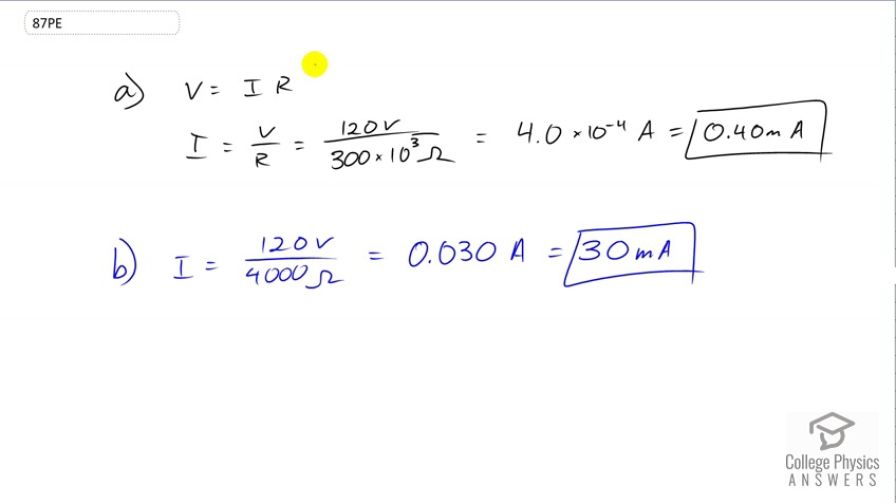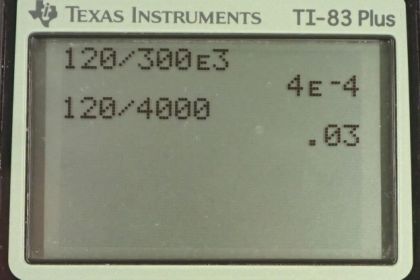Question
Find the current through a person and identify the likely effect on her if she touches a 120-V AC source: (a) if she is standing on a rubber mat and offers a total resistance of ; (b) if she is standing barefoot on wet grass and has a resistance of only .
Final Answer
Solution video
OpenStax College Physics, Chapter 20, Problem 87 (Problems & Exercises)

vote with a rating of
votes with an average rating of
.
Calculator Screenshots
Video Transcript
This is College Physics Answers with Shaun Dychko. So we want to find the current through a person depending on what is the resistance of the thing she's standing on. So the current is going to be voltage divided by resistance, because we divide both sides of Ohm's law here by R, and we get current is voltage over R. So that's 120 volts divided by 300 times ten to the three ohms, that is the 300 kilo-ohm's resistance of the rubber mat converted into ohms. This makes four times ten to the minus four amps which is 0.4 milliamps. Then if she is standing barefoot on wet grass, then with a resistance of only 4000 ohms, this works out to 30 milliamps which would be a dangerous amount of current.
Comments
b should be 120/(4000x10^3), because in the textbook it's 4000 k-omega
I agree, but I'm guessing it's a typo in the book. Especially since we would expect much less resistance in the wet grass vs a rubber mat. The book even uses the word "only" which implies it should be less than the first part.
Thank you very much for the comments both of you. Part (b) is meant to show how the current increases with decreasing resistance - the barefoot on wet grass scenario is meant to have less resistance than the rubber mat scenario of part (a), so the unit in part (b) is a typo in the textbook, and should be as written here.
All the best,
Shaun


